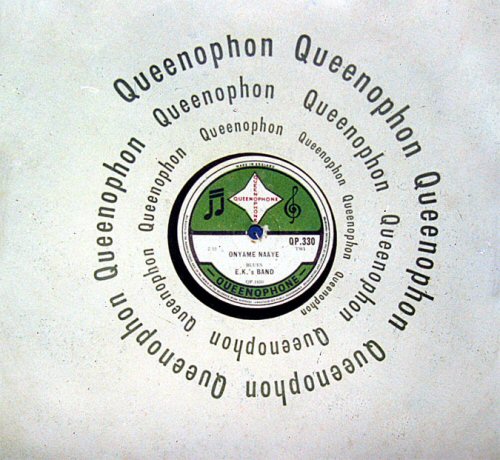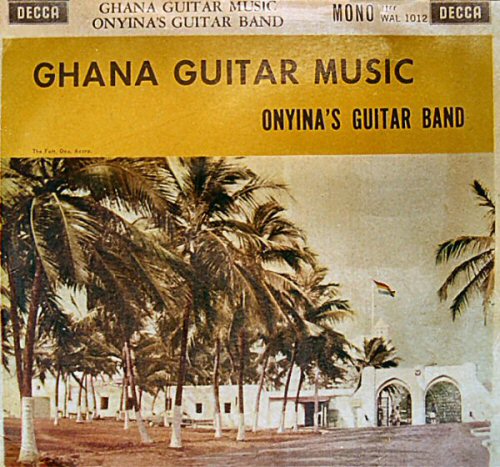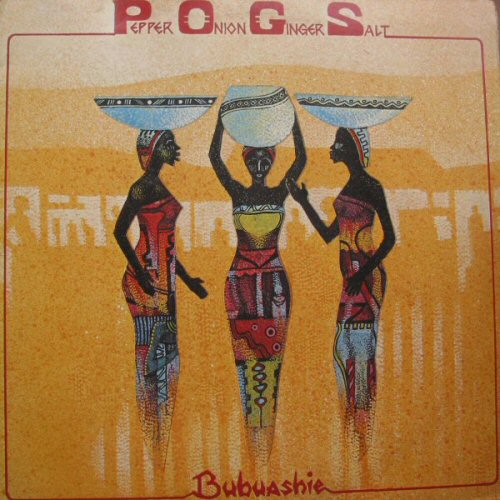Please wait a few moments while we process your request

Ghana's Highlife Music Collection
Highlife Music
Highlife Music
The 1930’s and the 1940’s witnessed the emergence of guitar bands that played highlife and indigenous variant known as the “Odonson” or Ashanti Blues. Some famous exponents of this type of music were Kwesi Pepera, Kwame Asare (a.k.a. Jacob Sam or Kwamin), Appianing, Piasah, Mireku, Kwasi Manu, Kamkam, Osei Bonsu, Kramo Seidu, and Appiah Adzekum, to mention but a few.
Jacob Sam recorded the highlife seminal "Yaa Amponsah" with his band known as the Kumasi Trio in London in 1928 on the Zonophone 001 Series. Paul Simon used certain aspects of "Yaa Amponsah" in his "Spirit Voices" song from "The Rhythm of the Saints" 1990 production, for which he still pays royalties.
After the Second World War, guitar bands playing highlife music became very popular. By the late 1940’s and early 1950’s there was a rather big market for this type of music produced by musicians such as Otoo Lartey, E.K. Nyame (E.K.’S Band), Appiah Adzekum, Yebua, Kwaa Mensah, Obiba T.K. and featured mandolins and guitars. The Appiah Adzekum’s instrumental ensemble consisted of bass, treble and tenor frame drums (known also as Gombe or Gome drums), finger gong-gong, two acoustic guitars and an accordion. Kwaa Mensah in addition of all these by Appiah Adzekum added the piano.
The most popular highlife style with all these groups was the Akan "Odonson" or Ashanti Blues, Konkoma and the Ga Kolomashie. Konkoma was a local dance and drumming craze that swept the Gold Coast in the 1930’s and 40’s that evolved from the local syncopated brass band tradition.
The highlife music played by the guitar bands also became closely linked with the concert parties. The first artist to combine these two distinct forms that is highlife and stage acting or concert was E. K. Nyame. Born in 1927, E. K. Nyame, the leader of the E.K’s Band, began his career with Appiah Adjekum. He formed his concert trio in 1952 and later merged it with his guitar band and named this new group the Akan Trio.
Other concert groups that followed suite and led by Kakaiku, Kwaa Mensah, etc., were based along the coastal area of Ghana, while Kwabena Onyina and others were in Kumasi in the Ashanti Region. The concert party form was loosely woven and readily incorporated current social events, gossips, exclamations by spectators and improvisational inspirations of individual actors. During Ghana’s cocoa boom in the 1930’s through the depression, the Second World War, the pre-independence riots in 1948, the arrest of Dr. Kwame Nkrumah and the advent of Ghana’s independence, concert parties dramatized the tensions and situations of everyday life among the intermediate classes who struggled daily to provide their basic needs.
Most of the big band highlife groups of the 1950’s and 60’s such as the Stargazers, E.T. Mensah and his Tempos Band, that used western musical instruments evolved out of the dance orchestras, a product of the Second World War. Before then small swing bands were established to cater for foreign servicemen and composed of white musicians as well as Gold Coasters (Ghanaians since 1957) recruited from the local dance orchestras. E.T. Mensah belonged to the Tempos Band, which was totally African after the foreign soldiers were demobilized and had left to their various countries. E.T. Mensah became the leader. His Trumpet fusion of swing, calypso and Afro-Cuban music with the highlife became so successful that the Tempos Band became the prototype for numerous West African Highlife Dance Bands. These included the Red Spots, The Black Beats, Ramblers, Stargazers, Broadway and the Uhuru dance bands to name but a few.
All the recordings released were on the 78 rpm shellac gramophone discs until they were supplanted by the 45 rpm and the 33.3 rpm vinyl discs in the mid 1960s and 70s on various labels including Decca, Zonophone, His Masters Voice, and Odeon.
Independance and experimentation
The end of the Second World War brought a dramatic change in the lifestyles of Ghanaians. Most Ghanaians had achieved various levels of education, formal education and training. Included in these classes were the war veterans, civil service personnel, and employees in the private business sector.
The 1950's, 60's and the 70's also sensitized the continent of Africa for freedom from colonial rule. Great names like Dr. Kwame Nkrumah of Ghana, Jomo Kenyatta of Kenya, Julius Nyerere of Tanzania, to name but a few, emerged. It was a time that cried out for change.
The stage was also set on the music scene for experimentation between the traditional songs and rhythms with modern instruments, which included the introduction of the spanish guitar. Its attendant dance was a mixture of the African religious and recreational dances and the introduction of foreign dance steps such as the Cha-Cha-Cha, the Watusi, Calypso, Soul and Reggae. In Ghana the highlife music also went through many experimentation with the blending of foreign electronic sounds, lyrics and non-computerized sounds. Not only did the urban centres become immersed in this new trend of modernity in the ballrooms, hotels, bars and night-clubs, but the villages also experienced this wave of change of modern social life. Some pioneers of this change were E.T. Mensah, King Bruce, etc. In theatre, satirical concert shows were performed on political themes, Ananse or Spider stories as well as social events. The Axim Trio, Kakaiku's band, E.K’S and Onyina’s Guitar Bands were forerunners of this popular folk concerts.
Today we have sounds labeled as Burger Highlife, Hip Life, Rap, Hip Hop, as well as Reggae, sung in local Ghanaian dialects, with computerized sound accompaniments.
The 1930’s and the 1940’s witnessed the emergence of guitar bands that played highlife and indigenous variant known as the “Odonson” or Ashanti Blues. Some famous exponents of this type of music were Kwesi Pepera, Kwame Asare (a.k.a. Jacob Sam or Kwamin), Appianing, Piasah, Mireku, Kwasi Manu, Kamkam, Osei Bonsu, Kramo Seidu, and Appiah Adzekum, to mention but a few.
Jacob Sam recorded the highlife seminal "Yaa Amponsah" with his band known as the Kumasi Trio in London in 1928 on the Zonophone 001 Series. Paul Simon used certain aspects of "Yaa Amponsah" in his "Spirit Voices" song from "The Rhythm of the Saints" 1990 production, for which he still pays royalties.
After the Second World War, guitar bands playing highlife music became very popular. By the late 1940’s and early 1950’s there was a rather big market for this type of music produced by musicians such as Otoo Lartey, E.K. Nyame (E.K.’S Band), Appiah Adzekum, Yebua, Kwaa Mensah, Obiba T.K. and featured mandolins and guitars. The Appiah Adzekum’s instrumental ensemble consisted of bass, treble and tenor frame drums (known also as Gombe or Gome drums), finger gong-gong, two acoustic guitars and an accordion. Kwaa Mensah in addition of all these by Appiah Adzekum added the piano.
The most popular highlife style with all these groups was the Akan "Odonson" or Ashanti Blues, Konkoma and the Ga Kolomashie. Konkoma was a local dance and drumming craze that swept the Gold Coast in the 1930’s and 40’s that evolved from the local syncopated brass band tradition.
The highlife music played by the guitar bands also became closely linked with the concert parties. The first artist to combine these two distinct forms that is highlife and stage acting or concert was E. K. Nyame. Born in 1927, E. K. Nyame, the leader of the E.K’s Band, began his career with Appiah Adjekum. He formed his concert trio in 1952 and later merged it with his guitar band and named this new group the Akan Trio.
Other concert groups that followed suite and led by Kakaiku, Kwaa Mensah, etc., were based along the coastal area of Ghana, while Kwabena Onyina and others were in Kumasi in the Ashanti Region. The concert party form was loosely woven and readily incorporated current social events, gossips, exclamations by spectators and improvisational inspirations of individual actors. During Ghana’s cocoa boom in the 1930’s through the depression, the Second World War, the pre-independence riots in 1948, the arrest of Dr. Kwame Nkrumah and the advent of Ghana’s independence, concert parties dramatized the tensions and situations of everyday life among the intermediate classes who struggled daily to provide their basic needs.
Most of the big band highlife groups of the 1950’s and 60’s such as the Stargazers, E.T. Mensah and his Tempos Band, that used western musical instruments evolved out of the dance orchestras, a product of the Second World War. Before then small swing bands were established to cater for foreign servicemen and composed of white musicians as well as Gold Coasters (Ghanaians since 1957) recruited from the local dance orchestras. E.T. Mensah belonged to the Tempos Band, which was totally African after the foreign soldiers were demobilized and had left to their various countries. E.T. Mensah became the leader. His Trumpet fusion of swing, calypso and Afro-Cuban music with the highlife became so successful that the Tempos Band became the prototype for numerous West African Highlife Dance Bands. These included the Red Spots, The Black Beats, Ramblers, Stargazers, Broadway and the Uhuru dance bands to name but a few.
All the recordings released were on the 78 rpm shellac gramophone discs until they were supplanted by the 45 rpm and the 33.3 rpm vinyl discs in the mid 1960s and 70s on various labels including Decca, Zonophone, His Masters Voice, and Odeon.
Independance and experimentation
The end of the Second World War brought a dramatic change in the lifestyles of Ghanaians. Most Ghanaians had achieved various levels of education, formal education and training. Included in these classes were the war veterans, civil service personnel, and employees in the private business sector.
The 1950's, 60's and the 70's also sensitized the continent of Africa for freedom from colonial rule. Great names like Dr. Kwame Nkrumah of Ghana, Jomo Kenyatta of Kenya, Julius Nyerere of Tanzania, to name but a few, emerged. It was a time that cried out for change.
The stage was also set on the music scene for experimentation between the traditional songs and rhythms with modern instruments, which included the introduction of the spanish guitar. Its attendant dance was a mixture of the African religious and recreational dances and the introduction of foreign dance steps such as the Cha-Cha-Cha, the Watusi, Calypso, Soul and Reggae. In Ghana the highlife music also went through many experimentation with the blending of foreign electronic sounds, lyrics and non-computerized sounds. Not only did the urban centres become immersed in this new trend of modernity in the ballrooms, hotels, bars and night-clubs, but the villages also experienced this wave of change of modern social life. Some pioneers of this change were E.T. Mensah, King Bruce, etc. In theatre, satirical concert shows were performed on political themes, Ananse or Spider stories as well as social events. The Axim Trio, Kakaiku's band, E.K’S and Onyina’s Guitar Bands were forerunners of this popular folk concerts.
Today we have sounds labeled as Burger Highlife, Hip Life, Rap, Hip Hop, as well as Reggae, sung in local Ghanaian dialects, with computerized sound accompaniments.
Kwame Sarpong © 2006 rev. 2014 FDL
Index:
- Foreword
- Historical Background
• About the Museum
• Ghanaian Traditional Music
• Highlife Music - Finding Aids in the Highlife Collection
• Music selection
• Ghanaian music album sleeves
- Part 1
- Part 2
• Biographies and Interviews









